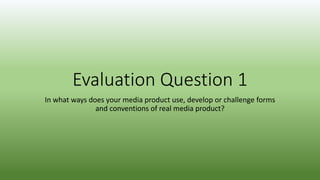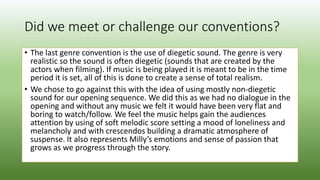The document evaluates how the opening sequence of the film "Shouting Quietly" uses and develops conventions of the social realism genre. It discusses how the film incorporates conventions such as using unknown actors, low budgets, location filming, long shots, close-ups, camera movements, and diegetic sound. It analyzes specific shots and how they follow conventions, such as establishing shots, close-ups to show emotions, and the use of color to represent mood. The document also explores how some elements challenge conventions, such as the opening aerial shot and use of non-diegetic music. Overall, it examines how the opening meets, develops, and in some cases challenges conventions of the social realism genre.


















